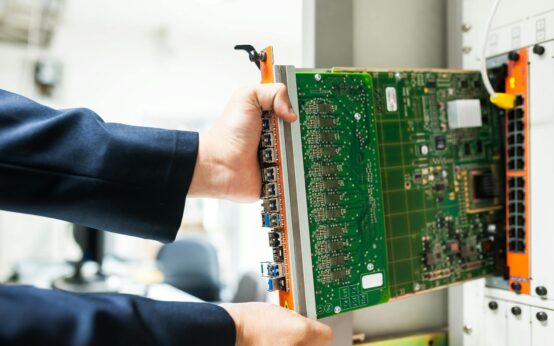A Look at the Technology Behind Electric Vehicles (EVs)
Remember the clunky, golf-cart-like electric vehicles of yesteryear? They’re a far cry from the sleek, powerful, and technologically advanced EVs dominating roads today. This transformation is thanks to groundbreaking advancements in electric vehicle technology, pushing the boundaries of what’s possible in transportation. This article provides a deep dive into the core components and systems that make modern EVs tick.
The Heart of the Matter: EV Batteries
Let’s face it, the battery is the star of the show in any electric vehicle. It’s the energy reservoir, the silent powerhouse that propels these vehicles forward. Most modern EVs utilize lithium-ion batteries, similar to those in your smartphone, but on a much grander scale. These batteries are chosen for their high energy density, relatively light weight, and improving lifespan.

Battery Management Systems (BMS)
Just like a conductor orchestrates a symphony, the Battery Management System (BMS) meticulously controls the charging and discharging of the battery pack. It monitors individual cell voltages, temperatures, and overall health, ensuring optimal performance and safety. Think of it as the brains behind the brawn.
Powering the Wheels: Electric Motors
Electric motors are the muscles of the EV, converting the battery’s stored energy into rotational motion. They are incredibly efficient, delivering instant torque and smooth acceleration. Different types of electric motors exist, each with its own characteristics, including AC induction motors, permanent magnet synchronous motors, and switched reluctance motors. The choice of motor often depends on the specific application and desired performance characteristics of the vehicle.
Regenerative Braking: Recapturing Energy
One of the coolest features of electric vehicle technology is regenerative braking. When you lift your foot off the accelerator or apply the brakes, the electric motor acts as a generator, converting kinetic energy back into electricity, which is then fed back into the battery. This ingenious system not only improves efficiency but also extends the driving range. It’s like getting a little energy boost every time you slow down. I remember my first time experiencing this in an EV – it felt like magic!
Charging Infrastructure: Fueling the Future
Charging an EV is different than filling up a gas tank. It requires a dedicated charging infrastructure. From Level 1 home charging (using a standard household outlet) to Level 2 faster charging (requiring a dedicated circuit) and DC fast charging stations that can replenish a significant portion of the battery in minutes, the options are expanding. This infrastructure is critical to the widespread adoption of EVs.
“The future of transportation is electric. It’s not a question of if, but when.” – Elon Musk
The Future of Electric Vehicle Technology
The evolution of EV technology is unrelenting. Researchers and engineers are constantly striving to improve battery technology, exploring solid-state batteries, and developing even more efficient motors.

Wireless charging, vehicle-to-grid (V2G) technology (allowing EVs to feed power back into the grid), and autonomous driving capabilities are just a few of the exciting advancements on the horizon. The future of transportation is electric, and it’s shaping up to be incredibly exciting.
Power Electronics and Thermal Management
Power electronics play a crucial role in controlling the flow of electricity between the battery and the motor, optimizing performance and efficiency. Efficient thermal management systems are also essential to keep the battery and other components within their optimal operating temperature range, especially during fast charging and demanding driving conditions.
The EV Architecture: A Holistic Approach
Modern electric vehicles are designed with a dedicated platform optimized for electric powertrains. This allows for better packaging of the battery, motor, and other components, leading to improved space utilization and overall vehicle dynamics.

The integration of these different systems is key to creating a seamless and efficient driving experience.
FAQ: Frequently Asked Questions about EV Technology
How long do EV batteries last?
EV battery lifespan varies, but most manufacturers offer warranties of around 8 years or 100,000 miles. Advances in battery technology are constantly improving lifespan.
Are EVs really better for the environment?
While the production of EVs does have an environmental impact, their operation produces zero tailpipe emissions, contributing to cleaner air and a reduced carbon footprint.
How much does it cost to charge an EV?
Charging costs depend on electricity prices and the type of charging station used. Home charging is generally the most economical option.
What is the range of a typical EV?
EV range varies significantly between models, but many modern EVs can travel over 200 miles on a single charge, with some exceeding 300 or even 400 miles.



 What Is Edge Computing? A Simple Guide to Why It Matters
What Is Edge Computing? A Simple Guide to Why It Matters  What is an API? A Simple Guide for Beginners (2024)
What is an API? A Simple Guide for Beginners (2024)  Digital Twin Guide: Building Virtual Replicas of Reality
Digital Twin Guide: Building Virtual Replicas of Reality  Tech’s Impact on Mental Health: A Balancing Act
Tech’s Impact on Mental Health: A Balancing Act  Unhackable Internet: The Promise of Quantum Cryptography
Unhackable Internet: The Promise of Quantum Cryptography  Ethical Hacking: Guardians of the Digital Realm
Ethical Hacking: Guardians of the Digital Realm  DeFi’s Hurdles: Security, Scalability & Regulation
DeFi’s Hurdles: Security, Scalability & Regulation  How to Read a Crypto Whitepaper: A Beginner’s Guide
How to Read a Crypto Whitepaper: A Beginner’s Guide  Find Undervalued NFT Projects: A Complete Guide
Find Undervalued NFT Projects: A Complete Guide  Blockchain Consensus Mechanisms Explained (PoW vs. PoS)
Blockchain Consensus Mechanisms Explained (PoW vs. PoS)  NFTs & Music: Empowering Artists in the Digital Age
NFTs & Music: Empowering Artists in the Digital Age  Trader’s Psychology: Master Fear & Greed in Markets
Trader’s Psychology: Master Fear & Greed in Markets